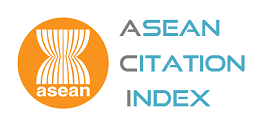Asymmetric of Income, Uneven Adaptive Capacities, and Determinants of Climate Change Adaptation Options among Poor and Non-Poor Rural Rice Farmers of Nepal
Keywords:
climate change, adaptive capacity, poor and non-poor, rice farmers, NepalAbstract
This study examines the determinants of adaptive capacities of poor and non-poor rural rice farmers in Nepal. A Cost of Basic Needs (CBN) approach is used to classify rural rice farmers as poor and non-poor, and a binary logistic regression model is used to identify the factors associated with adopting climate change adaptation options. The results show that about 20% of the total respondents in the study area were found to be poor with a moderate level of adaptive capacity. The study finds that poor farmers in rural areas are more vulnerable in terms of adaptive capacity and less able to adapt climate change adaptation options in comparison to non-poor farmers. It demands immediate action for greater investment, provision of subsidies, and institutional setup to strengthen rural rice farmers’ adaptive capacities.
Downloads
Published
How to Cite
Issue
Section
License
The submission of a manuscript implies that the paper is an original work and has not been published elsewhere. The author(s) authorize the journal to reproduce or distribute the paper in printed or other electronic forms.







